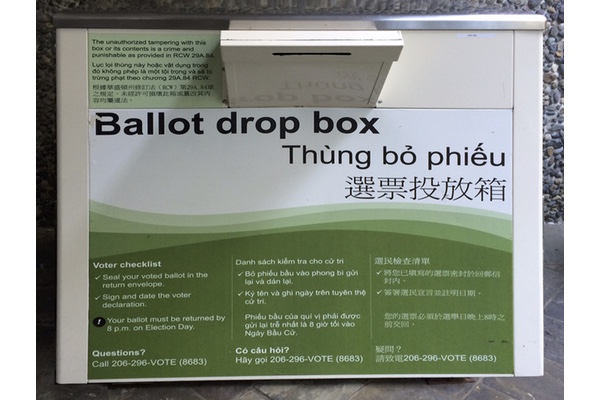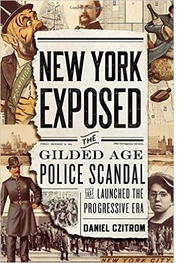The Shameful History of GOP Vote Suppression Started in the 1870s

The Brennan Center for Justice at New York University School of Law reports that in 2016, “17 states will have new voting restrictions in place for the first time in a presidential election. The new laws range from strict photo ID requirements to early voting cutbacks to registration restrictions.” Although these laws are new, their goal is a familiar one in American political history. Allegedly aimed at curbing vote fraud, they extend a long American tradition of tamping down the vote of political opponents. Most Americans are familiar with the systematic disenfranchisement of black voters in the Democratic “Solid South.” This was a pillar of American apartheid from the late nineteenth century until the Civil Rights revolution of the 1960s. Fewer are aware of the concerted effort by Republicans to suppress the Democratic vote in American cities throughout the late nineteenth century. That endeavor echoes eerily today.
 Immigrants who
settled in big cities, largely working poor and disproportionately
Roman Catholic, gravitated toward Democratic Party political machines
that offered desperately needed services and municipal patronage in
exchange for votes. Fearing the growing political influence of
cities, the Republican Congress in 1871passed
a Federal Elections law that created new mechanisms for suppressing
the urban vote.
Not to be confused with the current Federal Election Commission, the
statute authorized federal courts to appoint chief supervisors of
election for each judicial circuit. These supervisors could
investigate registration lists, observe elections, challenge voters
thought to be ineligible, and scrutinize the counting of ballots.
The law embodied the GOP’s deep animus against American cities and
those who inhabited them. They designed it to limit suffrage in the
urban North by regulating national elections in cities of over 20,000
people. In 1870, 64 out of 71 of these cities were in the North.
Immigrants who
settled in big cities, largely working poor and disproportionately
Roman Catholic, gravitated toward Democratic Party political machines
that offered desperately needed services and municipal patronage in
exchange for votes. Fearing the growing political influence of
cities, the Republican Congress in 1871passed
a Federal Elections law that created new mechanisms for suppressing
the urban vote.
Not to be confused with the current Federal Election Commission, the
statute authorized federal courts to appoint chief supervisors of
election for each judicial circuit. These supervisors could
investigate registration lists, observe elections, challenge voters
thought to be ineligible, and scrutinize the counting of ballots.
The law embodied the GOP’s deep animus against American cities and
those who inhabited them. They designed it to limit suffrage in the
urban North by regulating national elections in cities of over 20,000
people. In 1870, 64 out of 71 of these cities were in the North.
The key figure in writing and implementing the 1871 Federal Election law was U.S. Commissioner John I. Davenport, the fiercest Republican partisan of the era, who created a vast federal election machine explicitly designed to check the vote in New York and other Northern cities. Appointed U.S. Commissioner and Chief Supervisor of Elections for the Southern District of New York by the U.S. Second Circuit Court in 1871, Davenport spent a quarter century claiming to prevent fraud that in fact mostly consisted of intimidating legitimate urban Democratic voters.
During every congressional and presidential election year, Davenport personally checked on voters he thought had registered illegally, swore out arrest warrants threatening voters with allegedly defective naturalization papers, and published warnings in the city press that these men risked arrest. He commanded an army of U.S. Marshals and thousands of deputies, many of whom also served as Republican Party workers on Election Day. Those arrested for alleged illegal voting would be stashed in Davenport’s infamous “iron cage,” a cramped and dank temporary jail set up in the old Post Office building next to City Hall. But the evidence from numerous congressional investigations and other testimony shows that many of those routinely arrested or warned by mail to stay away from the polls—victims of Davenport’s “bulldozing” as it was called—included perfectly legitimate city voters: Civil War veterans who held naturalization papers issued by courts after their discharge from the Union army; men who had lost their naturalization papers; and other citizens, both naturalized and native born, who had attempted to vote legally. They would all be let go after an election and virtually none were ever prosecuted for violating the laws.
Davenport held deep prejudice against cities and urban voters, as when he once contrasted the largely Republican voters of upstate St. Lawrence County—“plain, temperate, substantial farmers, possessed of intelligence, discrimination and industry”—with the mostly Democratic voters in the neighborhoods of lower Manhattan, whom he described as “degraded, intemperate, ignorant and criminal in character.” The New York City vote attracted most of the attention because New York State’s electoral votes were decisive in the era’s tightly contested elections. In 1884, for example, Grover Cleveland, one of only two Democrats elected between the Civil War and the Great Depression, carried New York by less than 1,200 votes out of more than 1.1 million cast. With the winner needing 201 electoral votes for victory, the state’s bloc of 36 was by far the biggest prize in American politics.
Generations of journalists and historians, often prone to inflating the colorful excesses and depredations of Tammany Hall, have obscured a larger truth: that machine politics was a bi-partisan affair, rooted in the peculiarities of an electoral system where the law made no provision for the printing and distribution of ballots. There were in fact two parallel machines in Gilded Age political life. The familiar machine, the one whose power and influence has been endlessly attacked, demonized, and exaggerated, was Democratic, city based, with a largely ethnic and working class clientele. The other one was Republican, rural based, with a middle class, Protestant clientele organized around federal patronage for everything from post office appointments to Civil War pensions.
Today’s Republicans bear an uncanny resemblance to their Gilded Age forbearers. Back then they were about suppressing the urban vote; today their focus is on doing everything possible to disenfranchise the poor, the elderly, and communities of color. Historically, America has been strengthened by the expansion of voting rights to women and young people, as well as the protection of voting rights for African Americans and other minorities. Today, as in the Gilded Age, efforts to restrict the franchise and discourage voting strike at the very heart and promise of American democracy.